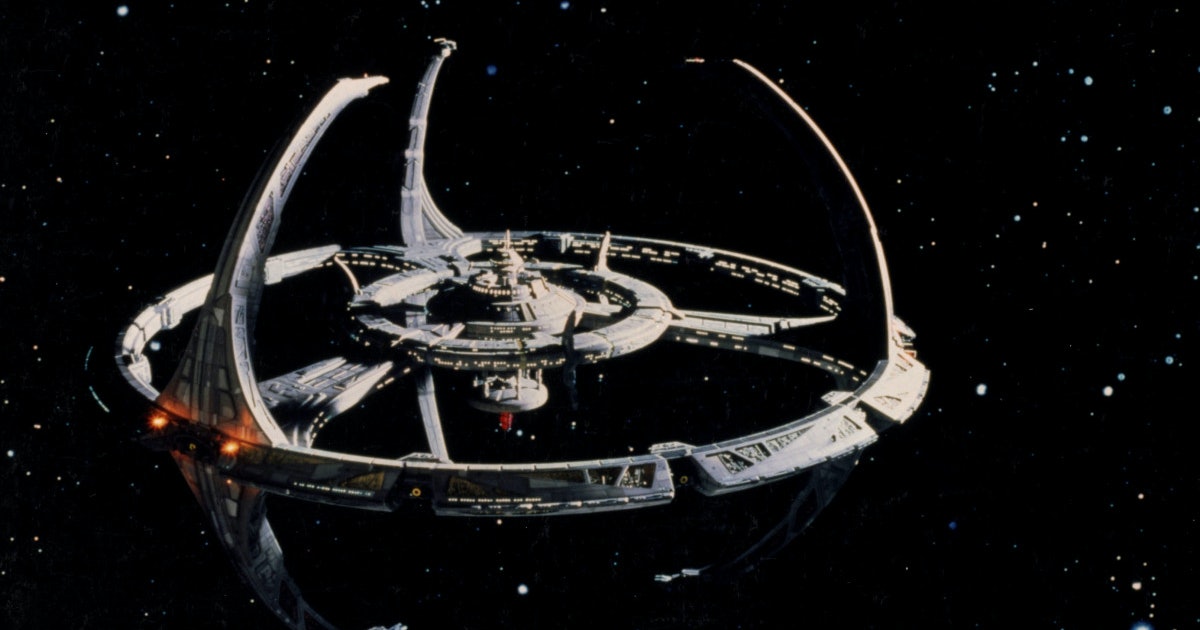
30 Years Ago, The Smartest Star Trek Show Aired its Dumbest Episode
One of the problems with today’s streaming-dominated television landscape is that no show gets the chance to, as Star Trek fans would say, “grow the beard,” a reference to a show signaling the conquest of its teething problems by having a main character debut facial hair. There are too many shows demanding too much of our time for us to be patient with a series for multiple seasons, so the era of prestige TV has conditioned us to expect stellar quality right out of the gate. Take recent Trek shows Discovery and Picard — many fans weren’t won back by their Season 3 upticks because they’d so readily abandoned them in their early episodes.
That’s what makes Deep Space Nine’s “Move Along Home” so fascinating. DS9 had little time to prove that The Next Generation’s success wasn’t just a fluke, and time ran out on them fast. Episode 9 of Season 1 didn’t just feel like a reused TNG adventure; it felt like a reused adventure from TNG’s baffling and much-maligned Season 1. Hadn’t the writers, many of whom had written for both shows, come a long way since those fledgling days? But while fans are quick to rank the episode among their least favorite, it still manages to hold fast to DS9’s core ethos, a distinction that makes DS9’s rough Season 1 far better than TNG’s.
In “Move Along Home,” Deep Space 9’s mix of recently posted Starfleet and Bajoran personnel welcome an unknown alien race from the Gamma Quadrant through the massive wormhole that’s opened on the space station’s doorstep. Naturally, Commander Benjamin Sisko wants everyone on their best behavior. When the Wadi arrive, sporting gleaming outfits and a few biker ’staches, Sisko is surprised they’re only interested in playing games at Quark’s bar. After hours of exhausting his amusements (and frustrated at Quark’s cheating), they unveil a game from their home, Chula, and it’s so convoluted it puts any “laboriously explaining a board game” tropes to shame. The most surprising feature is that DS9’s chiefs of staff — Sisko, Jadzia Dax, Kira, and Dr. Bashir — all get transported into a labyrinthine simulation of the game, and will need to win to escape.
It can’t be denied that “Move Along Home” is a silly and flimsy episode. It lacks any strong storytelling or dramatic stakes, as the Wadi reveal that our characters’ lives were never really in jeopardy. The scenes of our crew flailing around colorful sets, singing a nursery rhyme over a game of hopscotch while the Wadi click together sticks and say a bunch of made-up words, are painful. The episode was clearly affected by budget constraints and rewrites, something flagged by the four(!) credited writers.
But all the dynamics that would define DS9 for its seven-season run are not only present, they’re given a good deal of thought. Sisko is anxious to present his station as exemplary now that the wormhole has thrust them into the spotlight. The Starfleet personnel are keen to pragmatically play their way out of the game, but Kira, the stern, proud Bajoran officer, is reluctant. Quark immediately exploits his closeness with a new alien race for financial profit. The ship’s shapeshifting security officer, Odo, butts heads with his disrespectful Starfleet colleagues, but shows no problem doing unorthodox police work Starfleet would shudder at.
You just know that someone who looks like this is going to be a pain in the ass.
Paramount Television
Compared to the ninth episode of TNG, where barely any of the lasting characteristics of our ensemble were present, DS9 managed to capture what was so striking about its crew from the outset. The writers already had a strong sense of how each character would react to this silly situation, and in executing those reactions they helped DS9 build a strong, well-developed foundation.
Crucially, “Move Along Home” understands how to characterize the Gamma Quadrant, the nebulous, shifty realm that would ultimately wage war on the Federation. The Wadi’s strong gaming culture differentiates them from everything Starfleet, but like many of the other wily and duplicitous entities that would emerge from the wormhole, they seem to have done their homework on how to best toy with our heroes.
Starfleet prioritizes respectful relations above all else; the Wadi knew that if someone appeared on their doorstep demanding to play stupid games, Starfleet would have to indulge them. Putting them inside a Saturday morning puzzle show is their way of mocking Starfleet’s overly rigid values and forcing them to meet their aggressive and alien customs on their level. In the end, the Wadi walk free from Quark’s bar, having been adequately entertained at the expense of their noble new neighbors. Welcome to the Gamma Quadrant, they’re saying, we’re here to mess with you. While it’s a lot jankier than the series’ greatest heights, it’s impressive how much “Move Along Home” got right about DS9 this early on.
One of the problems with today’s streaming-dominated television landscape is that no show gets the chance to, as Star Trek fans would say, “grow the beard,” a reference to a show signaling the conquest of its teething problems by having a main character debut facial hair. There are too many shows demanding too much of…
One of the problems with today’s streaming-dominated television landscape is that no show gets the chance to, as Star Trek fans would say, “grow the beard,” a reference to a show signaling the conquest of its teething problems by having a main character debut facial hair. There are too many shows demanding too much of…